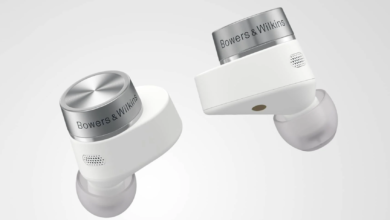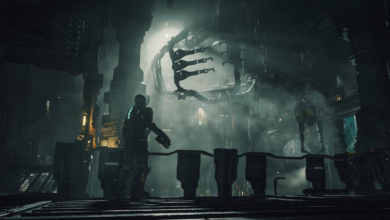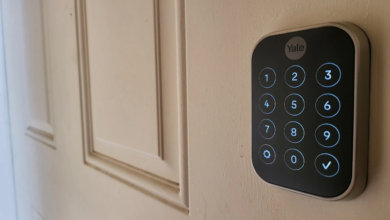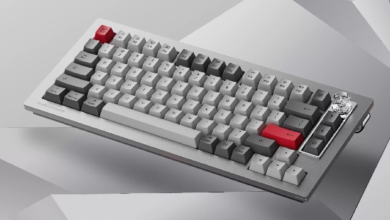Eventide Misha review: A playful sequencer that says to hell with tradition
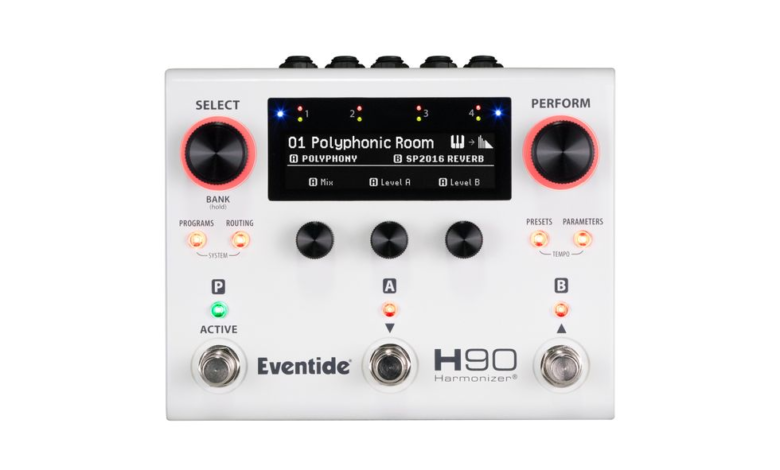
Eventide created a sequencer full of surprises by eschewing note-based creation in favor of intervals and tone rows.
The landscape of contemporary music production makes standalone sequencers something of a luxury. These days, even the most affordable synths and samplers contain basic sequencing features. Even while many MIDI controllers contain built-in sequencers, they are often used to support rather than replace live performance. There are, of course, a few notable exceptions to this rule (Arturia’s BeatStep Pro is still very popular eight years after it was released), but you have to start looking into the challenging and frequently intimidating world of Eurorack and modular synths to frequently come across instruments that serve only as your personal note-playing machine.
Eventide is not an obvious choice to enter the Eurorack market because it is best known for its high-end effects units like the H90 and Time Factor. But with Misha, its first sequencer, that is precisely what it chose to do. Certainly, no one could have faulted the business for taking a conservative approach with its initial entry into the market. Instead, it made the unconventional decision to toss aside the rules and create something new that is both entertaining and perplexing, especially if you’re well-versed in conventional music theory and keyboard-based composing.
I’m not a really good pianist. I also don’t know a whole lot about Western music theory. Even yet, it took me a while to really comprehend Misha. This is due to the fact that the buttons on its face don’t play particular notes. Instead, they play notes within a scale that are connected to the previous note played.
This can best be explained with the aid of an illustration. Assume the Misha has been programmed to play the C Major scale. Nine coloured buttons with the labels “-4” through “+4” are located beneath the screen that displays the key and scale. Because the root note, C, is zero intervals from the beginning of the scale, pressing 0 immediately produces the C note. The following note in the scale, the D, is what you’ll hear if you push the +1 button instead of the C#.
All is well thus far, right? Nevertheless, if you hit the +1 button once more, an E, which is one interval higher in the scale, will sound instead of a second D. Pressing 0 would yield a second D note. Also, you have to hit -1 to return to C. Although it’s not particularly difficult, it defies a fundamental belief held by musicians that if you play the same note repeatedly, you should hear the same result. I anticipate consistently receiving an A if I play the fifth fret on a guitar’s low E. I would struggle much more if the sounds rose another five steps without me moving my hands.
But this is the Misha’s fundamental idea. Instead of being based on absolute pitch, it forces you to only compose using the relationships between the notes in a scale. This sequencer probably isn’t for you if the thought of that makes you want to run for the hills. But if, like me, you find Misha’s unconventional strategy intriguing, stick around, and let’s delve a little more.
Hardware
Let’s take a step back and examine the hardware before diving too far into the world of scales, modes, and sequencing. Although my device arrived with a special pod for the Misha, it is apparently made to fit in a Eurorack configuration. Although it is a somewhat large module at 28 horsepower broad and just 19 millimeters deep, it should fit in even the most transportable skiffs. Yet, that width is somewhat necessary. On anything smaller, the 17 buttons, 2 knobs, micro USB port, microSD slot, and 16 14″ jacks for MIDI, audio, and control voltage would feel ridiculously crammed.
The configuration has just the right amount of room to function as a performance tool without overwhelming a tiny Eurorack system. The screen is big enough to display all the relevant information, the knobs are solid, and the nine interval buttons are evenly spaced. The shift buttons have a hollow spring that feels a little cheap and makes an audible popping sound, which is the only hardware complaint I have.
Three tracks hold the 12 CV (control voltage) jacks, which have three pairs of gate and CV outputs as well as two inputs each. This gives you a respectable number of choices for manipulating the Misha’s sequencer or controlling numerous synth voices. Moreover, there are stereo out, clock in, MIDI in and out jacks, and a stereo out. For use with unique keymapping’s, the micro USB connector can also be linked to a computer keyboard. There are plenty of connectivity alternatives available here.
Although it can take some time to get used to, the screen in the center of Misha’s interface contains all the information you require for using it. I urge you to read the instruction manual. That won’t take long and will help you avoid a lot of hassle. It’s almost deceptively easy to use the Misha if you understand how it functions. In fact, I often had the impression that something was missing. With all of its buttons, knobs, and 1-inch screen, this module was undoubtedly concealing features from me.
But definitely spend some time customizing those four user buttons. While the up and down one octave (button 1 and 2) and up and down one chromatic step (button 3 and 4) default capabilities are adequate, they can offer a lot of performance potential when customized to match your unique requirements. Personally, I prefer setting it to a fifth and substituting “move pitch” for the chromatic steps. It gives a little more flavor than a straightforward octave, but it still generally blends in musically with the rest of the arrangement.
Misha has an oscillator built into it that you may activate in the options, which is one more thing to note. But, beyond offering a straightforward sound source for testing songs and generally obtaining a I feel bad for the sequencer since it is so ineffective. In fact, the manual makes no mention of it.
Composing
Misha comes packed with 100 scales, ranging from the most fundamental (Melodic Minor) to the most unusual (Enigmatic) and microtonal lunacy (48 note equal-tempered). Also, there are 100 user slots available for loading your own scala files if that somehow isn’t enough for you. The musical possibilities built into Misha appear to be limitless thanks to the different scales, modes, and keys.
Selecting a scale and then beginning to push the interval buttons is the fastest method to begin investigating them. Actually, playing an instrument this way is quite fulfilling. Although I don’t have a large setup to put this in, I used it in conjunction with Cre8Audio’s East Beast and West Pest, the Moog Subharmonic on, and the Electron Digi tone to great success.
When you want to bring a tune you hear in your head to life, you don’t go through this kind of process. It would take a lot of effort for someone to educate themselves to think in intervals, but it would be possible to use Misha in that way. Instead, pleasant accidents may result from this. To ensure that you can accurately duplicate everything that attracts your ear, you simply need to pay extra close attention to what you play.
Indeed, it is possible to lock a controller to a certain scale, much like the Harp, making it virtually hard to play out of tune. But, there is something about playing intervals rather than notes that feels both natural and unexpected, unlike anything a keyboard could ever achieve. Instead of being a painful endeavor to leverage my limited theoretical knowledge to make ideas come to life, creating melodies becomes a rewarding adventure in which I’m essentially forced to give control.
How many octaves I want to experiment with is one of the few things I have to decide in advance. For example, if I set the note range to two octaves, the intervals will return to being two octaves below my root note once I have climbed above that limit. Nevertheless it would definitely be best to try to avoid going all the way around. It can sound a little harsh to drop two octaves.
When using Misha as a sequencer, the octave limitations also apply, allowing you to play a melody line that spans four octaves of a scale before restarting. Nevertheless, the sequencer is where things start to get a little tricky. It is based on the concept of a “tone row,” a serial composition technique in which a motif is produced by playing all twelve notes of the chromatic scale once, without repeating any of them. The novelty in this situation is that any scale, not simply a twelve-note Western chromatic scale, can use the idea of a tone row.
This approach to music obviously leans towards the experimental end of the spectrum, and at some scales it can sound clumsy. This also implies that the choice of scale affects the number of stages in a series. While two octaves of the quarter tone scale contain 48 steps, an octave sequence in a minor pentatonic scale only has five steps. A part of me truly wishes that the tone row was a mode you could turn on and off, even though I love the creative concept. By a firmware upgrade, I’d love to see Eventide include a more conventional sequencer with repeatable notes.
Moreover, there is a chord mode that enables you to send three notes through MIDI or split them among the three CV outs. This is an excellent method to add complexity and variation to a Eurorack setup with numerous synth voices, especially if you have additional utilities that can further alter what the Misha produces. For the bass, you could, for instance, send the root note through a straightforward arpeggiator while playing leads or pads with the other notes. Sadly, there is no internal mechanism for arranging chord voicings. Although it’s sort of a pain, you can manually alter it while performing. As an alternative, you might use another sequencer to change the chord voicings and send MIDI CCs to Misha.
The Misha works best when used as a performance tool in conjunction with an external MIDI controller. The black keys can repeat notes, play random scale notes, or move chromatically up and down one step at a time, while the white keys offer an even wider range of interval jumps (nine in either direct) and easy access to the root note. Of course, if you want additional variables at your fingertips, you can also press one of the four user-programmable buttons on the module’s front or even map other keys on the keyboard.
Wrap-up
Misha is not cheap; it costs $599. And if you require a Eurorack pod and power adaptor, the price rises to $699. Yet it’s also genuinely original. This is the only option available (that I’m aware of) if you’re drawn to the appeal of interval-based performance or tone row sequencing. Although I’m sure there are techniques to achieve a similar result using software, this is the only option available in terms of hardware.
Even yet, I do wish Eventide had given conventional composition a little bit more consideration. I prefer not to be constrained to the number of notes in a scale and to be able to repeat notes or programmed stretches of any length. Maybe, those will be included in a future firmware update, when it might be more difficult to think of reasons not to get one. Misha is currently a pricy, specialized tool that is also indubitably creative and amusing.


